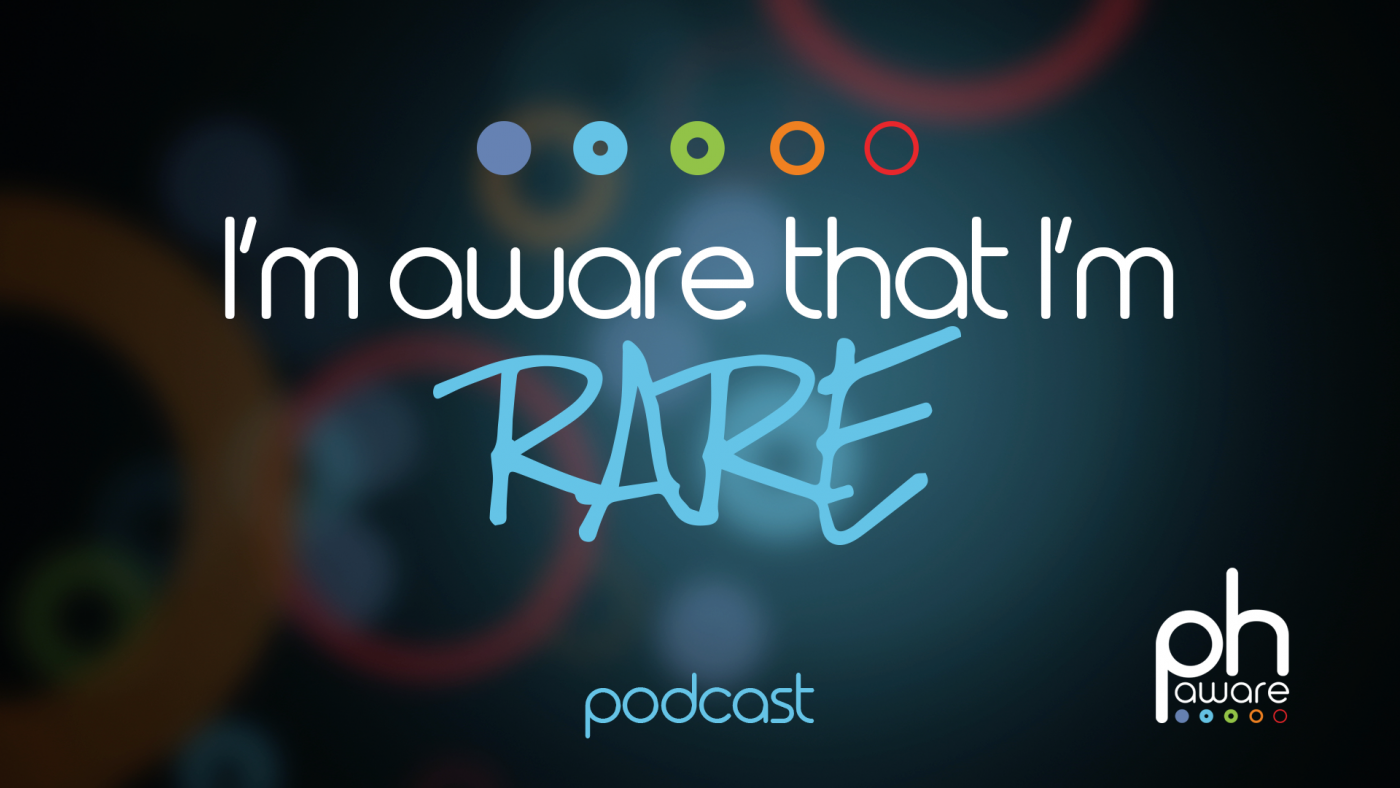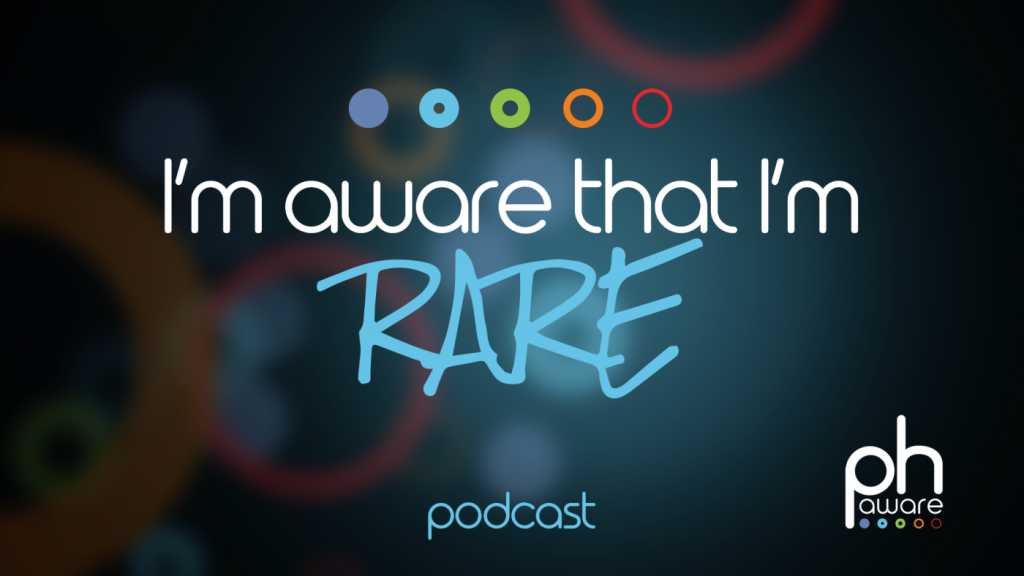Phaware Podcast: Murali Chakinala, MD, Part 2 of 2

This podcast series, created and produced by phaware, is being offered as a regular guest feature on Pulmonary Hypertension News to bring the voices and life experiences of PH patients, family members, caregivers, healthcare specialists, and others to our readers. You may listen to the podcast directly, or read it via the transcript that runs below.
I’m Aware That I’m Rare: Murali Chakinala, MD
The phaware® interview (Part 2 of 2)
Murali Chakinala, MD discusses the basics of clinical trials in PAH. Dr. Chakinala is a professor in the Division of Pulmonary and Critical Care Medicine. His areas of specialty include pulmonary vascular diseases, including pulmonary hypertension and pulmonary arterio-venous malformations.
Hi, I’m Dr. Murali Chakinala. I’m a pulmonologist at Washington University in St. Louis, Missouri.
Today I’d like to talk with you about the basics of clinical trials in pulmonary arterial hypertension.
Clinical trials are really one of the most essential parts of medicine, because without clinical trials in our country we wouldn’t have the therapies  that we have. PAH patients that are alive and thriving right now wouldn’t be if it weren’t for clinical trials that were conducted in the ’90s and the last decade. It is an extremely rigorous process by which any sponsoring agency, whether it’s a governmental organization, or more often it’s typically a private pharmaceutical entity, wishes to market and promote an agent for any kind of condition. It’s not that they can just say, “We have a drug that works. Let’s start prescribing it.” In order to meet FDA guidelines for safety and efficacy, and then in order for insurance companies or the government to agree to pay for these medicines, evidence is going to have to be demonstrated to show that it’s safe, it’s effective, and that the system can handle the medication.
that we have. PAH patients that are alive and thriving right now wouldn’t be if it weren’t for clinical trials that were conducted in the ’90s and the last decade. It is an extremely rigorous process by which any sponsoring agency, whether it’s a governmental organization, or more often it’s typically a private pharmaceutical entity, wishes to market and promote an agent for any kind of condition. It’s not that they can just say, “We have a drug that works. Let’s start prescribing it.” In order to meet FDA guidelines for safety and efficacy, and then in order for insurance companies or the government to agree to pay for these medicines, evidence is going to have to be demonstrated to show that it’s safe, it’s effective, and that the system can handle the medication.
There’s a clinical trial process, and there are several phases, from Phase 1 all the way up to Phase 4. Typically, Phase 1 studies are ones that [are] really the first exposure a medication may have in humans. Oftentimes, it’s in normal people just to see how they tolerate a medication. Not all compounds go through Phase 1. Certainly a lot of cancer drugs are given in Phase 1, but a lot of our PAH drugs didn’t have a Phase 1 study.
Phase 2 studies are typically then given to the patients with the disease of interest. Again, these are usually early-phase studies. It’s the first chance to see how a drug may affect a patient with that disease and what kind of signal to suggest there’s benefit. They’re also a chance to look for adverse effects. Many times, Phase 2 studies are designed to help us figure out the right dose of a medicine that we’re going to use to study in larger trials.
Pivotal trials
Then we get to what’s called Phase 3 studies. There’s a lot of names for these. These are often called pivotal trials. These are often called registration trials. These are the studies that are the really large ones. It’s really the crown jewel of the clinical trials, because now we’re ready to demonstrate definitively that a drug in the disease state of interest is better than a control or placebo group. It’s the way that a medication performs in this study, in terms of meeting its primary and secondary endpoints, that often makes up the biggest part of the new drug’s dossier in front of the FDA to decide whether a drug is approved or not.
Then, finally, there are also Phase 4 studies. These are typically post-marketing studies. So, a drug’s been approved for, say, pulmonary hypertension or pulmonary arterial hypertension, and now we want to maybe study it some more to answer some other questions, even though the drug’s already out there and on the market. For instance, there’s a study going on right now where we’re looking at three drugs right away in a newly diagnosed patient, versus two drugs. Every one of those three drugs is already FDA-approved and out there for consumption, but we’ve never shown that three together is better than two. That’s really a Phase 4 study.
Then, also, sometimes we see, when drugs that are already approved for one indication being repurposed, or trying to be studied for a new indication — a label change, if you will. That’s typically a Phase 3 study, even though it’s already on the market.
Some of the myths or the fears, if you will, that patients have about [a] clinical trial is, what are they really being exposed to? The patients sometimes feel like they might be a guinea pig. Some patients also worry about things like, “What’s going to happen to my other medicines that I’m already on?” Patients are also going to worry about the cost of their trial. “What does it mean to me personally?” These are some of the myths.
I would say, some of the things that I try to educate patients about, of course, every trial’s different, but, first up, all trials are going to be closely watched by the sponsor themselves, by the investigative team, your doctor or the principal investigator, the study coordinator.
Also, all our institutions have what’s called institutional review boards, or IRBs. These are committees that are designed to safeguard the conduct of all clinical research at an institution. They have already reviewed and vetted the protocol. They’ve provided their feedback about the protocol and requested any changes. Then, we have to file reports with them. Sometimes those are at the local institutional level, or they’re more national and multiple institutions share them. Either way, these are all the police, if you will, of the trials that are closely watching it to make sure that the trial is doing what it says and that people aren’t suffering in any way.
Also, many of these big trials have what’s called data safety monitoring boards, or DSMBs. This is an independent group that works with the study sponsor to review the conduct of the trial and to ensure that it’s being done safely and heading towards its goals, or else they have the authority to shut a trial down. I think those are some of the safeguards to help alleviate some patients’ fears about going into a trial. Again, every trial’s a little different. But most of our trials in PAH, when we’ve used a medication in a study, we often don’t touch or don’t make a change in the other therapies that a patient may be on. Not always, but most of the time. I think patients should rest assured that it shouldn’t affect what they’re already doing.
Trial participants volunteer
Then, lastly, in clinical trials, the vast majority of these trials, your participation, of course it’s voluntary. The costs associated with these trials are covered by the studies. Anything directly related to the study. I think the last thing, as far as in general safety reassurance, is that a patient should understand that the participation in a trial is voluntary, and that’s throughout the trial. Getting into the trial is voluntary. But once you’re in a trial, if anyone’s dissatisfied or concerned or doesn’t want to keep participating, they have the right to leave a trial at any point. Of course, we want to try to preserve people’s participation at trial in order to make the fullest [use] of that individual’s data. It is always voluntary and a patient can always leave a trial for whatever reason they want to. I think those are some of the myths and the safeguards to reassure people.
I always try to tell patients that, “Think about where you were and where you are now, and hopefully you’re feeling better. Again, think about you wouldn’t be here now if it wasn’t for the people that came before you that participated in that clinical trial.” It’s like that saying about pay it forward. Now is your chance to do something for the whole community, make a contribution in your own way that will hopefully forge new treatments and new treatment strategies that will impact the next wave and wave after that of PAH patients.
At the same time, many trials are designed to try to help the patients actively participating. Granted, there’s a risk. You might not feel better, or you might have an adverse effect and you feel worse. But, if the trial does what we hope it will and our hypothesis comes true, then patients could benefit while they’re even in the trial themselves.
My name is Dr. Murali Chakinala, and I’m aware that I am rare.
EVERYBODY HAS A STORY. WHAT’S YOURS?
Phaware global association wants to share your pulmonary hypertension story with their engaged global audience. Whether you are a patient, caregiver, or medical professional, they are enlisting PH community members from around the world. Visit www.phawarepodcast.libsyn.com/contact to share your story and to be considered for a future episode. Never miss an episode with the phaware® podcast app. Learn more about pulmonary hypertension at www.phaware.global. #phaware
***
Note: Pulmonary Hypertension News is strictly a news and information website about the disease. It does not provide medical advice, diagnosis, or treatment. This content is not intended to be a substitute for professional medical advice, diagnosis, or treatment. Always seek the advice of your physician or other qualified health provider with any questions you may have regarding a medical condition. Never disregard professional medical advice or delay in seeking it because of something you have read on this website. The opinions expressed in this column are not those of Pulmonary Hypertension News or its parent company, Bionews Services, and are intended to spark discussion about issues pertaining to pulmonary hypertension.










Leave a comment
Fill in the required fields to post. Your email address will not be published.